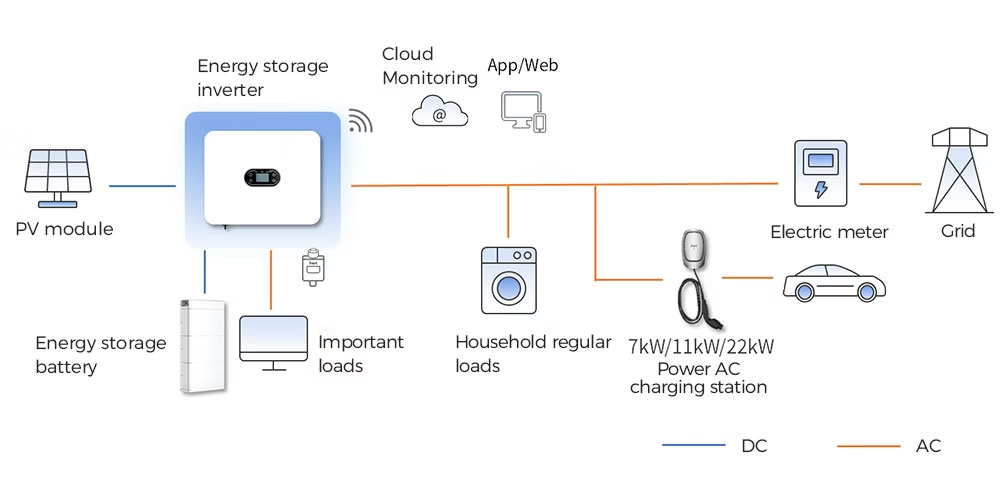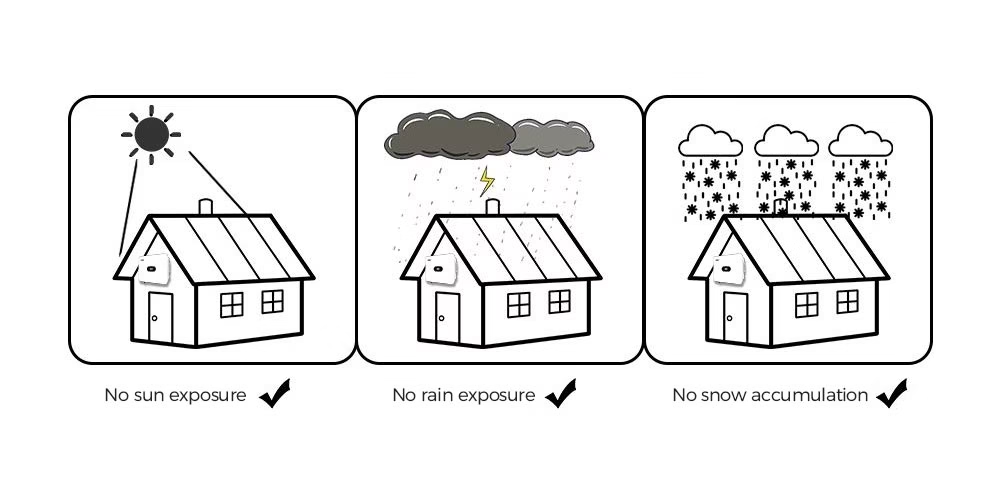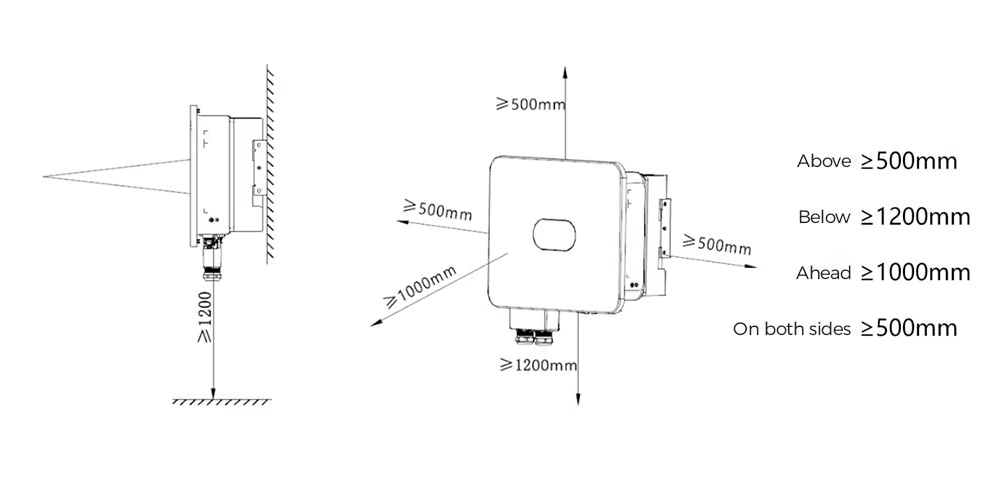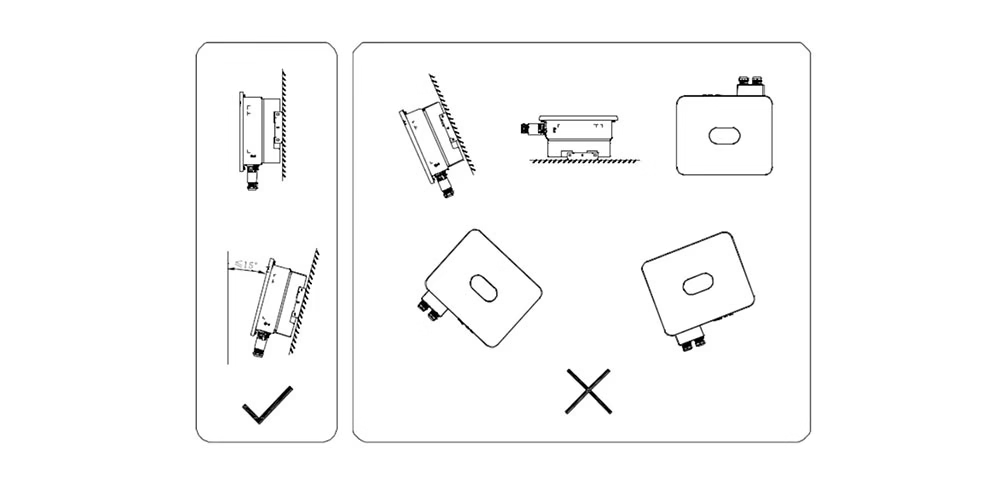A complete residential solar-plus-storage system requires core equipment working together at every stage to ensure efficient energy conversion and storage.
At the power generation stage, photovoltaic modules capture solar energy and convert it into direct current (DC). Next, the household solar inverter efficiently transforms DC into alternating current (AC) for household use. Finally, the battery system stores and manages electrical energy, ensuring stable power supply and optimal energy utilization throughout the system.

1.Choose a suitable installation location
The installation location of the energy storage inverter should avoid sunlight, rain and snow. If the installation location is incorrect, the service life of the energy storage inverter will be reduced.

In order to ensure good heat dissipation of the energy storage inverter and facilitate daily maintenance, the installation height, installation spacing, and installation angle of the inverter energy storage must meet the following requirements.
2.Installation height and spacing requirements


Spacing requirements for side-by-side installation

Installation angle requirements: vertical or backward≤15°

Installing household solar inverters correctly plays a vital role in ensuring the efficient and safe operation of photovoltaic energy storage systems. By carefully planning the installation location, spacing, and angle, users enhance heat dissipation, simplify maintenance, and extend the equipment’s service life. Therefore, proper installation directly improves the system’s overall performance. Moreover, as household solar-plus-storage systems become increasingly popular worldwide, choosing a reliable household solar inverter further guarantees stable clean energy use and ensures continuous home electricity safety.

